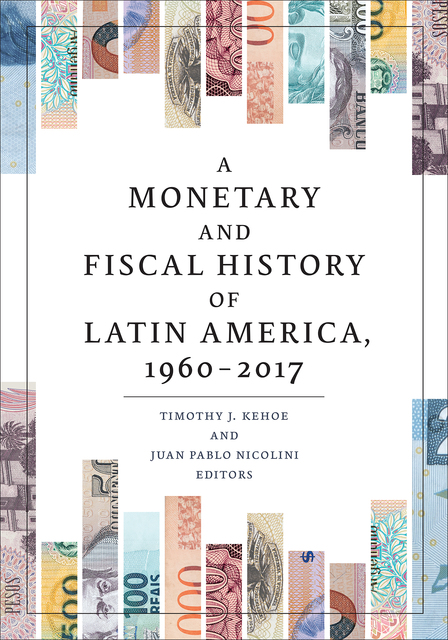Using the Data Appendixes
The Manifold version of A Monetary and Fiscal History of Latin America, 1960–2017 has Microsoft Excel files that have the data for the government budget accounting for each of the eleven countries whose modern economic histories are studied in the book. The Excel files also perform the budget accounting developed by Timothy J. Kehoe, Juan Pablo Nicolini, and Thomas J. Sargent in the chapter, “A Framework for Studying the Monetary and Fiscal History of Latin America.” In the Framework—Appendix PDF, there are step-by-step instructions how to do the budget accounting for Argentina and Mexico using Excel. The calculations are those performed in the Excel files titled Argentina—Budget Accounting and Mexico—Budget Accounting. The sources for the data in the Excel files are given in the Argentina—Data Description and Mexico—Data Description PDFs.
Using the Framework—Appendix PDF and one of the MS Excel files, the interested reader can do the Kehoe-Nicolini-Sargent budget accounting exercise for another country by plugging that country’s data into the relevant columns in the Data worksheet in the MS Excel file. The calculations are automatically done in the Calculation worksheet. The Results worksheet uses the complete government budget accounting in the Calculation worksheet to construct whatever table is presented in “The History of COUNTRYNAME” chapter. The user who wants to modifying one of the MS Excel budget accounting files needs to be careful in expanding or contracting data columns in the Data worksheet and the corresponding columns in the Calculation worksheet by the same amount and copying the calculation formulas where necessary.
In addition to the MS Excel files for budget accounting, there are PDFs with sources for all of the data used in the budget accounting. There are also MS Excel files with the data for all figures. The data appendix files can be accessed from the resources section or by clicking on the cubes next to title of the chapter or discussion within the body of the text.
The naming conventions for files are:
- Framework—Appendix provides instructions on doing the Kehoe-Nicolini-Sargent budget accounting in the chapter “A Framework for Studying the Monetary and Fiscal History of Latin America.”
- COUNTRYNAME—Budget Accounting are Excel files that perform the budget accounting for the country studied in “The History of COUNTRYNAME.”
- COUNTRYNAME—Data Descriptions are PDFs that provide the sources of the data used in the budget accounting in COUNTRYNAME—Budget Accounting.
- Framework—Figures is an Excel file that provides the data for the figures in “A Framework for Studying the Monetary and Fiscal History of Latin America.”
- COUNTRYNAME—Figures are Excel files that provide data for the figures in “The History of COUNTRYNAME.”
- Lessons—Figures is an Excel file provides the data for the figures in “Lessons from the Monetary and Fiscal History of Latin America.”
- COUNTRYNAME—Discussion Figures are Excel files that provide data for the figures in the corresponding discussion of the history of COUNTRYNAME.



